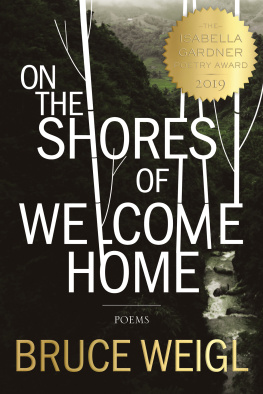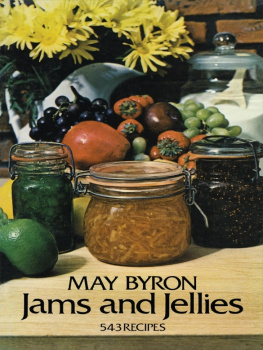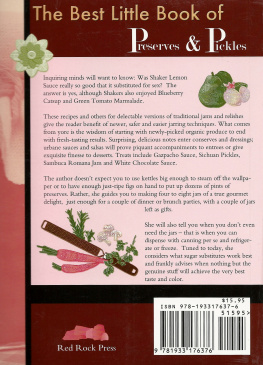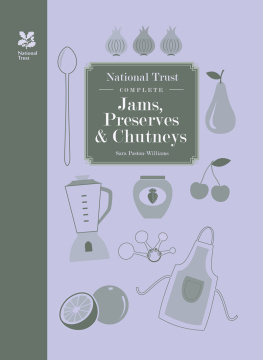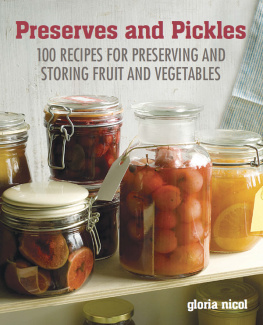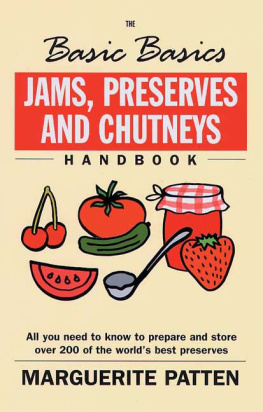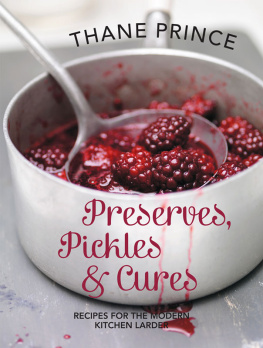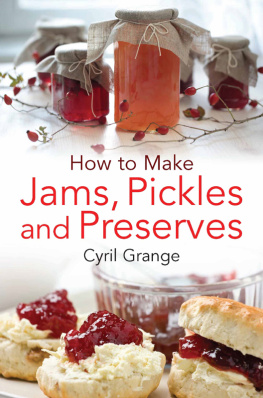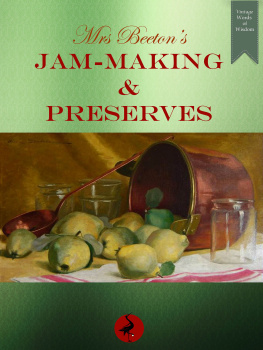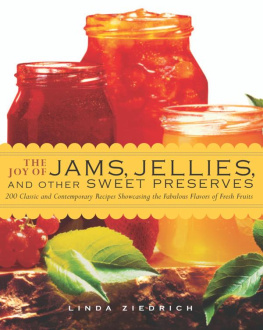a SAVOR THE SOUTH cookbook
Pickles & Preserves
SAVOR THE SOUTH cookbooks
Pickles and Preserves, by Andrea Weigl (2014)
Okra, by Virginia Willis (2014)
Bourbon, by Kathleen Purvis (2013)
Biscuits, by Belinda Ellis (2013)
Tomatoes, by Miriam Rubin (2013)
Peaches, by Kelly Alexander (2013)
Pecans, by Kathleen Purvis (2012)
Buttermilk, by Debbie Moose (2012)
2014 The University of North Carolina Press
All rights reserved. Manufactured in the United States of America.
SAVOR THE SOUTH is a registered trademark of the
University of North Carolina Press, Inc.
Designed by Kimberly Bryant and set in Miller and
Calluna Sans types by Rebecca Evans.
The paper in this book meets the guidelines for permanence and durability of the Committee on Production Guidelines for Book Longevity of the Council on Library Resources. The University of North Carolina Press has been a member of the Green Press Initiative since 2003.
Library of Congress Cataloging-in-Publication Data
Weigl, Andrea.
Pickles and preserves / by Andrea Weigl.
pages cm (A savor the South cookbook)
Includes index.
ISBN 978-1-4696-1440-3 (cloth : alk. paper)
ISBN 978-1-4696-1441-0 (ebook)
1. Pickles. 2. Canning and preserving. 3. Cooking, AmericanSouthern style. I. Title.
TX805.W45 2014
641.462dc23 2013036720
18 17 16 15 14 5 4 3 2 1
The Pickled Figs and Yellow Squash Pickles recipes in this book have been reprinted with permission from Jean Andersons Preserving Guide (Chapel Hill: University of North Carolina Press, 2012).
Contents
a SAVOR THE SOUTH cookbook
Pickles & Preserves
Introduction
My year is defined by canning sessions. In the spring, I make strawberry preserves, turning bucketfuls of ripe fruit into a thick syrup with a layer of berries on top. I love the sight of those jeweled jars lined up on the kitchen counter. In the summer, I put up peaches in many formspickled, brandied, or as a thick butter. I also make numerous jars of yellow squash pickles, the canned good most requested by my friends, relatives, and neighbors. In the fall, I stalk my neighbors neglected fig trees, culling a handful of figs at a time to stash in the freezer. Later, I make fig preserves and use some of them in a fig cake famous on North Carolinas Outer Banks. And in the winter, when I have a free day, I dig up the Jerusalem artichokes growing in my backyard and turn those tubers into a bright yellow relish, a spoonful of which adds a vinegary crunch to a grilled hot dog or a bowl of potato salad.
Im a northerner by birth and a southerner by circumstance. Ive spent the last seventeen years in the South and now consider it home. (I joke that I named my daughter Josephine Pearl because I wanted to be a proper southern mama. I also know that I turned a cultural corner when I started to miss sweet tea and being called maam whenever I traveled north of the Mason-Dixon Line.) My conversion to adopted southerner started via my stomach. I came to love the South through its food: pimento cheese, biscuits and gravy, fried chicken, the many variations of barbecue. Canning furthered my exploration of southern food traditions.
I started, as many canners do, by making strawberry jam. With each success, I gained the confidence to tackle the next canning challenge, from peach preserves to cucumber pickles. I eventually explored the classic recipes entrenched in southern culture: pickled okra, dilly beans, hot pepper jelly. I came to admire the resourcefulness of southern canners who apparently wasted nothing. Inedible watermelon rinds are turned into pickles. Okra ends up in a canning jar as a way to prevent an overabundant crop from going to waste. Pickled green tomatoes and green tomato relish make use of those bitter, hard tomatoes that wont ripen before the first frost. Then there are all those intriguing recipes that take advantage of uncultivated fruits and vegetables, such as mesquite bean jelly, damson plum preserves, and Jerusalem artichoke pickles.
I also learned how communal canning can be. I joined friends in the kitchen to make all that chopping and peeling go faster. We would turn our kitchens into assembly-line operations for an afternoon and then split the jars between us at the end of the day. We also eagerly shared beloved recipes with each othera fact that is reflected in this book, which includes many recipes from professional chefs, cookbook authors, and fellow avid canners.
That recipe swapping also revealed to me how canning in the South has evolved beyond pickled okra and dilly beans. These days, people are enjoying the convenience of refrigerator pickles and freezer jams. Theyre taking advantage of the wide array of ingredients now available, which can be seen in a recipe like salt-cured cucumber pickles with shiso leaves, a Japanese herb.
Generations of canners in the South and beyond owe a debt to French inventor Nicolas Appert, a professional cook known as the father of canning. In the late 1790s, he began experimenting with preserving fruits, vegetables, and meats by packing the food into glass bottles that were sealed with cork and heated in a hot-water bath. The French government had offered a cash prize to anyone who came up with a new way to preserve food. Around 1810, Appert won 12,000 francs for his canning method and published a book on his technique. French newspapers at the time praised him, saying Appert has found a way to fix the seasons; at his establishment, spring, summer and autumn live in bottles, according to Sue Shephard, author of Pickled, Potted and Canned: How the Art and Science of Food Preserving Changed the World (New York: Simon & Schuster, 2000). Its worth noting that Appert and other scientists of that era believed his method worked because it removed all the air from the bottles. The truth was not discovered until 1862, when Louis Pasteur proved that heat kills the microorganisms that spoil food, a process we now know as pasteurization.
Canning spread from Europe to the United States in the early 1800s, and the Mason jar was invented here in 1858. The Souths longer growing season created a bounty of produce to be preserved, on both plantations and small family farms, especially in the mountain South. Womenwhite, black, free, enslavedundertook much of the work of canning and preserving, and for many, it was a source of well-earned pride. After the Civil War, the regions impoverishment made canning a necessity for many families who turned to foraged fruits and berries. In Southern Food: At Home, on the Road, in History (Chapel Hill: University of North Carolina Press, 1993), John Egerton writes about a Tennessee man who made a jelly from the red berries of a nonpoisonous variety of sumac bush. And Ann Cashion writes in The New Encyclopedia of Southern Culture: Foodways (Chapel Hill: University of North Carolina Press, 2007) that, tellingly, cookbooks published after the Civil War include recipes utilizing native fruits that grow uncultivated, such as roselle, persimmon, muscadine, crabapple, and pawpaw.
Many recipes also reflect the cultural heritage of the people living in the South. Descendants of Europeans made marmalade. The British Empires influence can be seen in chutneys made with green tomatoes, peaches, pears, and apples. German immigrants in the Appalachian Mountains made sauerkraut. Floridians still make guava jelly, which was probably introduced to them by Native Americans in Florida and the Caribbean.
Home canning likely reached its peak in the United States in the 1930s and 1940s. After the Great Depression, the Works Progress Administration helped establish community canning centers in an effort to encourage the nations struggling inhabitants to become more self-sufficient. The centers continued through World War II, a natural fit with that eras victory gardens. Cashion notes in
Next page

